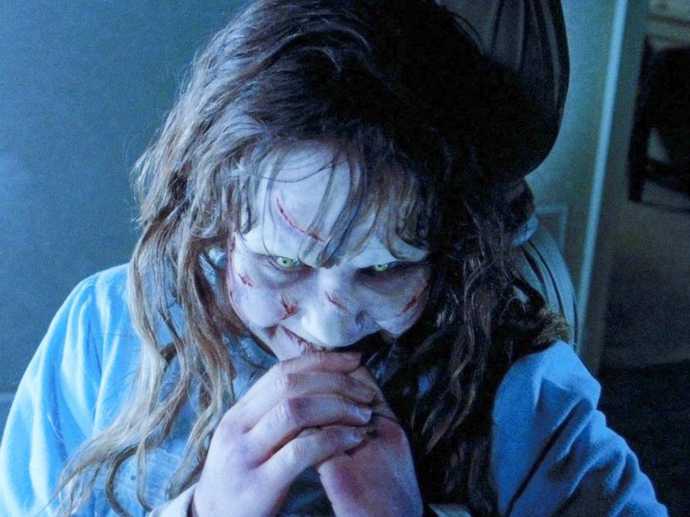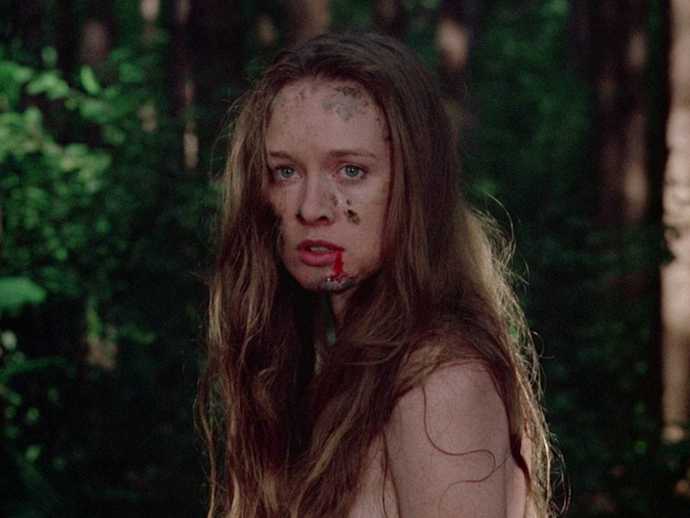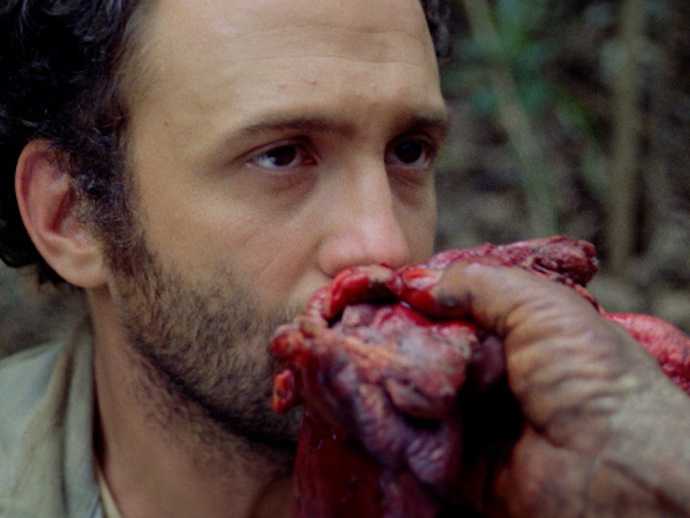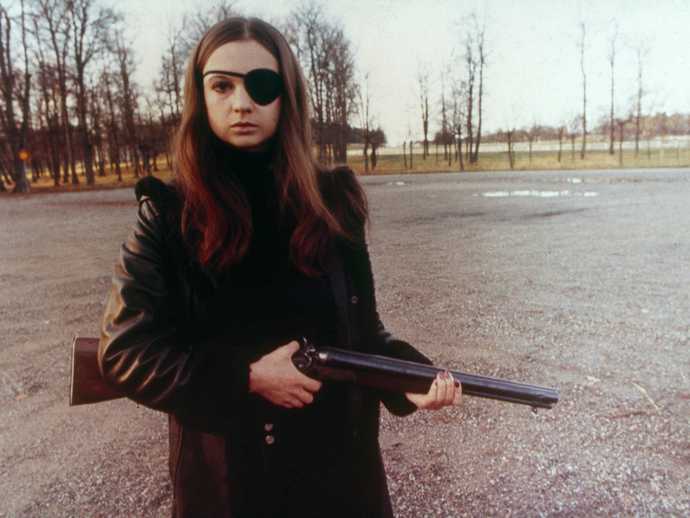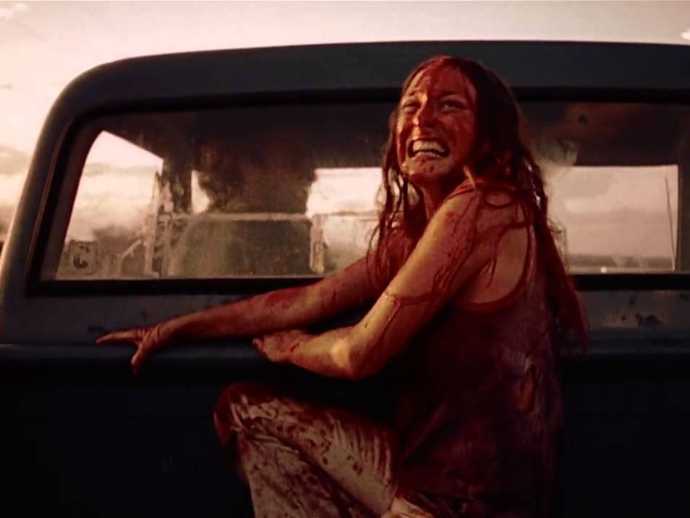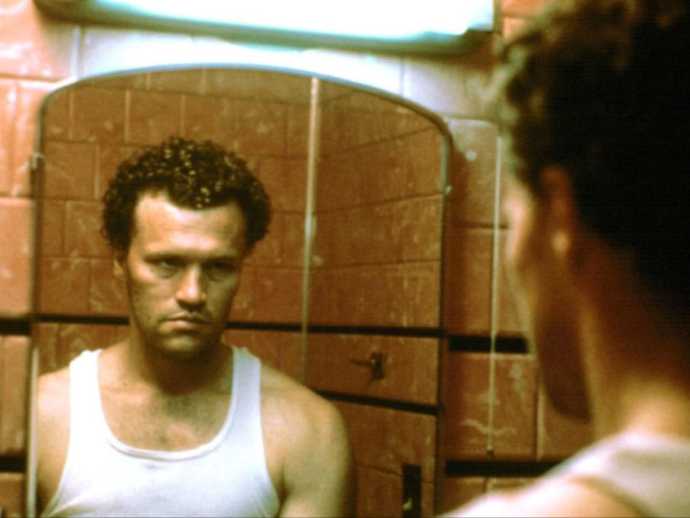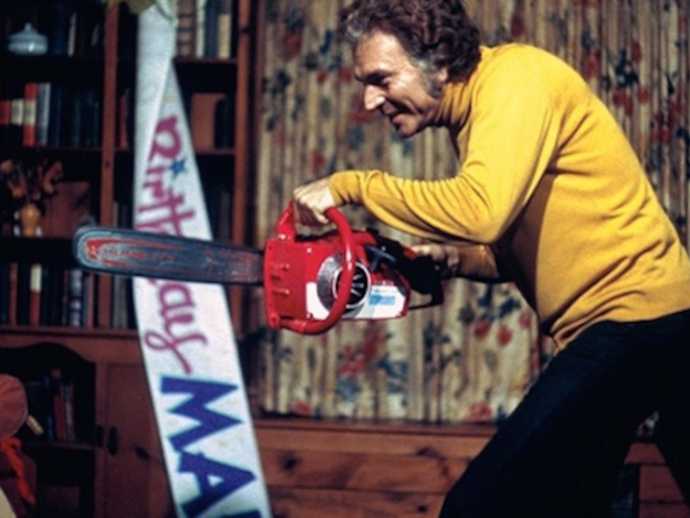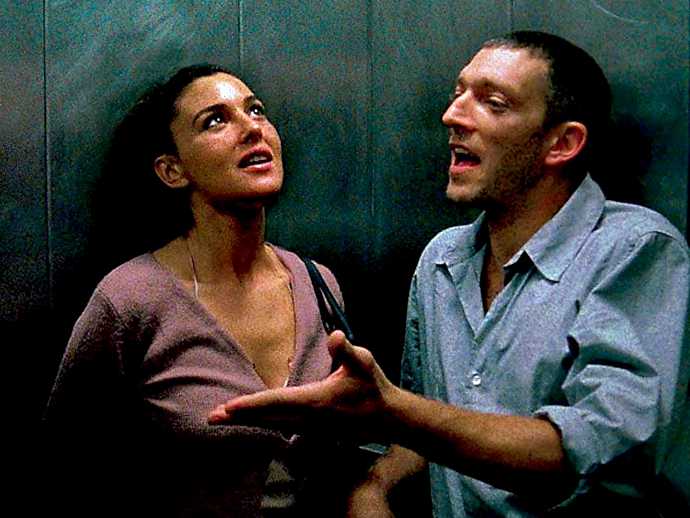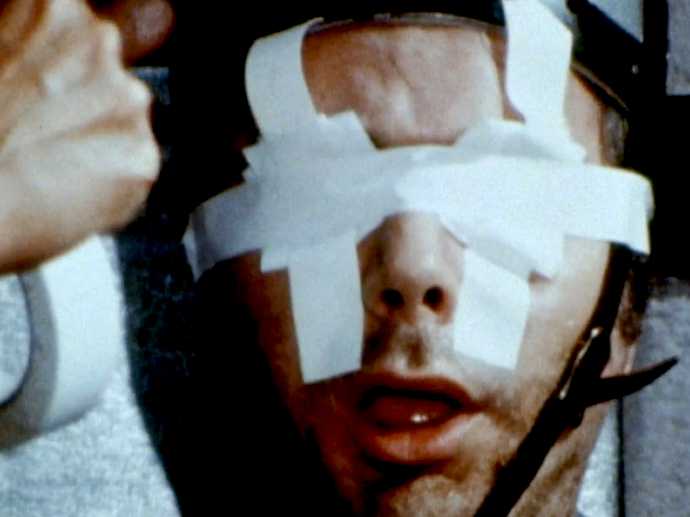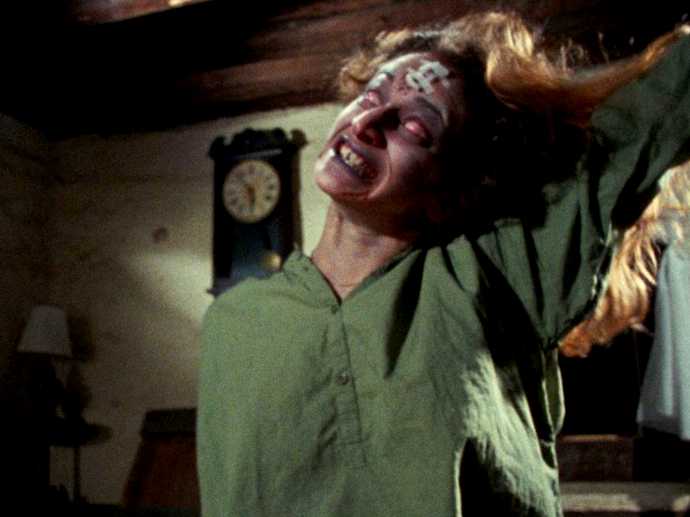We’re more open about extreme movies now, but back in the day, it wasn’t uncommon for a movie to be deemed “too violent,” “too disturbing,” or “too sick” for the general public. Banned horror movies are interesting as reflections of their time periods, allowing us glimpses into what was “too much” for their eras—and they often leave us confused as to why they were banned at all because they aren’t as shocking to our modern sensibilities. Whether they live up to their past reputations or not, here are some of the scariest horror movies ever made that were banned for being too terrifying or too grotesque.
10. The Exorcist (1973)
While it’s now frequently placed in most “Best Horror Movies” lists, William Friedkin’s adaptation of William Blatty’s 1970 novel of demonic possession invoked not just fear and terror, but visceral bodily reactions in theater viewers when it was released. Upon release in 1973, The Exorcist was condemned by the Catholic Church and reviled by critics. Its depiction of Satan manifest in the body of an innocent 12-year-old girl (played to shivering effect by a young Linda Blair) hit audiences on a frighteningly deep level. Something about seeing a pure young girl spouting out lines like “Your mother sucks cocks in hell!” and having her head twist around 360 degrees and mutilating herself with a crucifix… It was enough to cause vomiting, fainting, and even hysteria in audiences. The Exorcist was given an X-certificate in 1974 (forbidding public showings to anyone under 18), then finally re-released with the director’s uncut version in 1999.
9. I Spit on Your Grave (1978)
Originally released in 1978 as Day of the Woman, Meir Zarchi’s I Spit on Your Grave has since become reconsidered as a feminist cult classic, inspiring films such as 2017’s Revenge and last year’s Promising Young Woman. It was banned due to its controversial topic: the rape and subsequent revenge of its heroine. In particular, the 30-minute scene of gang-rape against the protagonist sparked moral outrage. It received an X rating around the world, and explicitly banned in Norway, Iceland, West Germany, and Ireland for “glorifying violence against women.” Roger Ebert called it a “vile bag of garbage.” Inspiring the “video nasty” genre of movies that were banned by film commissioning bodies in the UK, I Spit on Your Grave paved the way for movies that seemingly exploited women’s bodies while forcing us to confront the dark and real traumas that women endure.
8. Cannibal Holocaust (1980)
The mixture of exotic subject matter and the cinéma vérité documentary style ensured that audiences came away thinking they had just witnessed real-life events on the screen. Ten days after its 1980 premiere in Milan, Cannibal Holocaust was banned under the orders of a local magistrate and charged with “obscenity,” with the courts having jurors determine if certain scenes—such as a woman being impaled—were real or not. Cannibal Holocaust was eventually released in the UK in 2001 after nearly six minutes were cut. It would go on to inspire a slew of copycat horror movies that presented violence as real.
7. Thriller: A Cruel Picture (1973)
Described as the “roughest revenge movie ever made,” Axel Fridolinski’s 1973 film Thriller: A Cruel Picture was more obscure than I Spit on Your Grave but just as influential on cinema history. Quentin Tarantino even based Kill Bill on it. The film tells the story of a “dumb sex slave” who’s repeatedly raped, then gets revenge on her rapists with a sawn-off shotgun. It was marketed as the only film to be banned in its home country of Sweden. So effective was this movie, Christine Lindberg became an icon in her black eyepatch and long black coat and handy black shotgun.
6. The Texas Chain Saw Massacre (1974)
Alongside The Exorcist, Tobe Hooper’s 1974 low-budget horror movie The Texas Chainsaw Massacre pioneered the modern horror genre. It’s a melding of sun and dirt, with terror always bubbling beneath the heat. Its cheap aesthetic and low-budget production—completed with only $140,000 in 100-degree heat during August in Texas—added to the atmosphere of dread and gave it the feeling of a documentary. However, despite being banned in several countries, the film went on to achieve legendary status with its villain, Leatherface, taking on iconic recognition in the cultural consciousness.
5. Henry: Portrait of a Serial Killer (1986)
Just like Cannibal Holocaust and Texas Chainsaw Massacre, 1986’s Henry: Portrait of a Serial Killer was interpreted by some as an actual documentary film of a real-life killer, which can be attributed to its low-budget aesthetic and realistic atmosphere. After its initial film festival run in 1986, Henry: Portrait of a Serial Killer was given an X rating in the US, which only added to its controversial reputation. In 1991, the uncut version was further banned by the board of film censors in Australia.
4. The Last House on the Left (1972)
Wes Craven’s 1972 film The Last House on the Left had the unusual origin of being based on a classic Swedish arthouse film: Ingmar Bergman’s 1958 film The Virgin Spring. (Both films are connected by their “horror of the rural.”) Craven updated it with the grit, grime, and moral panic of American horror movies in the 70s—and the resulting film is a nasty revenge film that still shocks today. Two teenage girls on their way to a rock concert are kidnapped by a gang of murderous thugs, then tortured and raped in the woods. The parents are left to enact revenge. Just like I Spit on Your Grave, it was a box office success but banned in the UK, where it wasn’t released until 2008. The US continued showing it with an R rating, with one cinema in Massachusetts stating that “the film relates to a problem that practically every teenage girl and parent can identify with.”
3. Irreversible (2002)
Gaspar Noé has long been known as the “enfant terrible” of French cinema. Provocative and shocking, 2002’s Irreversible was a part of the New French Extremism movement occurring at the time. Unconventionally, he decided to tell the story backwards—from end to beginning. This gave the film added shock value by opening with the brutal act of final revenge and ending with Monica Belucci’s horrific rape (which lasts a painful 32 minutes on screen). Irreversible made the audience reconsider their thirst for violence and revenge, showing just how empty it all is. Despite not being marketed as a genre horror movie, it successfully depicted the real-life horrors of rape, violence, and revenge. Irreversible was banned in Australia.
2. Faces of Death (1978)
Hailed as the most gruesome film of all time, 1978’s Faces of Death earns its reputation for mashing up fictional horror and real-life deaths. Faces of Death shows scenes of re-enacted deaths as well as real deaths—the reason why it was banned in 46 countries. It was seen as a “shockumentary” that ran the gamut of horrifying images: open autopsies, plane crashes, occult orgies full of human blood, slaughtered animals on meathooks, real electrocutions. Faces of Death also acts as a symbol of all our collective fears and anxieties around the most inevitable thing of all: death. In addition to being banned in dozens of countries, Roger Ebert called it the “most popular nasty of them all.”
1. The Evil Dead (1981)
While the franchise would evolve away from disturbing horror to comedic horror, the 1981 film that launched the Evil Dead universe is nothing like its sequels. The Evil Dead may seem theatrical and fun now—especially the possession scenes—but given that Sam Raimi made it as a student on a measly $90,000 budget, it’s remarkably creepy. The Evil Dead, both the original and its remake, was banned in several countries (including Finland, Singapore, and Ukraine) for graphic violence, blood, sex, and gore. When it was later released on VHS in 1983, moral crusader Mary Whitehouse in the UK bemoaned it as the “number one video nasty,” which is strange to think about considering its modern status.

